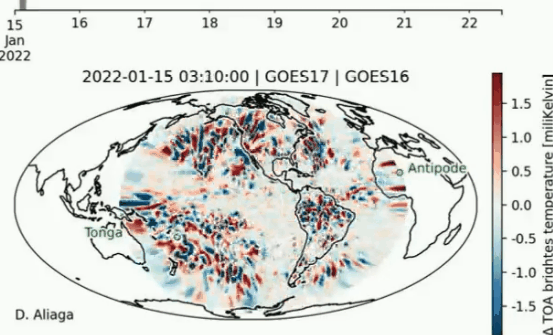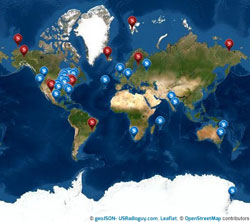![]()
Hunga Tonga Hunga Haʻapai Eruption
On 20 December 2023 Hunga Tonga Hunga Haʻapai erupted after being relatively inactive since 2014, causing a large plume that was visible from Nukuʻalofa. The Volcanic Ash Advisory Centre Wellington NZ issued an advisory to airlines. Explosions could be heard up to 170 kilometers (110 mi) away. The initial eruption continued until 2 am on 21 December. Activity continued, and on 25 December, satellite imagery showed that the island had increased in size.
Volcanic activity died down on 5 January before restarting on 13 January after the volcano sent an ash cloud 17 km (55,000 ft) into the atmosphere. The government subsequently issued a tsunami warning.
On 15 January, the volcano violently erupted again, about seven times more powerfully than the eruption on 20 December 2021. There were numerous reports of loud booms across Tonga and other countries, such as Fiji and as far away as New Zealand and Australia. A boom was heard in Alaska seven hours after the eruption.

Near the eruption, the explosion damaged property, including shattered windows. A tsunami warning was issued just after 5:30 p.m. by the Tonga Meteorological Services and the tsunami flooded coastal areas in Tonga. A 3.9 ft (1.2 m) tsunami was observed in Nukuʻalofa, Tonga, and a 2.0 ft (0.61 m) one in American Samoa.
Two people were killed in Peru and two fishermen were injured in San Gregorio, California and the body of a British woman was found in Tonga after she went missing when the tsunami struck the South Pacific island.
Post analysis of the Hunga Tonga Hunga Haʻapai eruption has clearly shown there has been a global impact.
Using GOES 17 IR imagery and applying some filters and negative inversion of the images on GOES 17 Imagery to enhance the shock wave from Hunga Tonga. Images every 30 minutes is why it is not ‘smooth’.
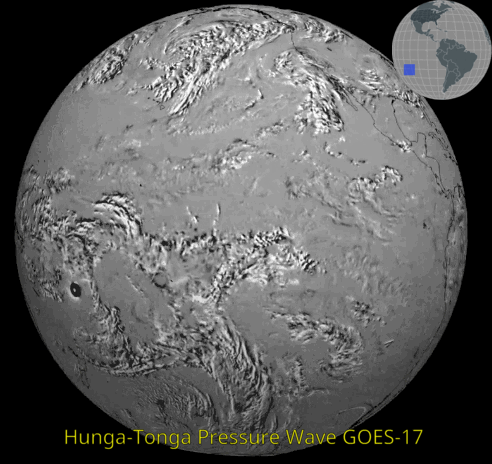
Clearly, you can see the shock wave as it circumnavigated the entire globe. In the image below, created from pressure sensor data across the United States, you can see the wave as it crossed the continent at the speed of sound. 0400 UTC to 1030UTC on the 15th. Wave starts supersonic but then reduces as it travels through the atmosphere. My calcs on the average speed is about 700 MPH
Like waves you see in the water, these waves create vertical displacements of air causing surface air pressure fluctuations. The video above provides an animation of minute interval pressure data observed from NWS/FAA ASOS stations. The data is presented in the form of “sparklines”. Each line represents the map location of an observation time series lasting 15 minutes. The north/south variation in the line represents a change in pressure with the color being the magnitude over the 15 minutes.
The second pressure wave from Hunga Tonga Eruption as it travels East to West (the first traveled West to East) . This one traversed the globe in the other direction and so arriving on the east coast first. This lapse is from early Sunday morning and guess what, there are still more lapses to be shown as the waves continue to propagate around the globe. It is unclear when these waves will disappear, but given the size of the eruption and some limited literature on previous documented events, it is likely soon.
On 16 January satellite radar surveys before and after the eruption show that most of the island has been destroyed. Only small parts of Hunga Tonga and Hunga Haʻapai remained.
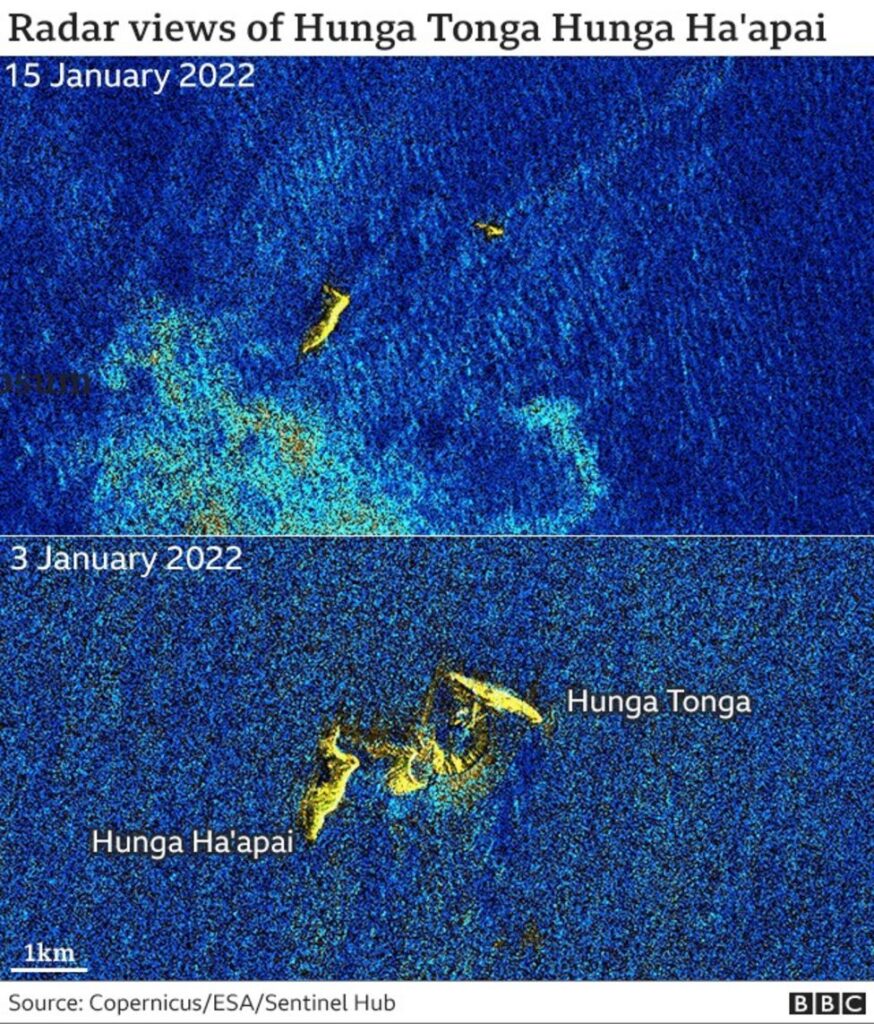
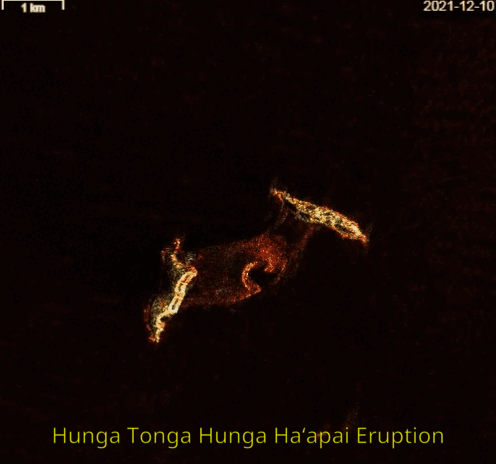
January 23rd 2022 -It is amazing that after 7 days the Hunga Tonga shock wave continues to circle the planet (10 times!) and can still be detected in the infrared by geostationary satellites such as GOES 16 and GOES17. Credit -University of Helsinki
